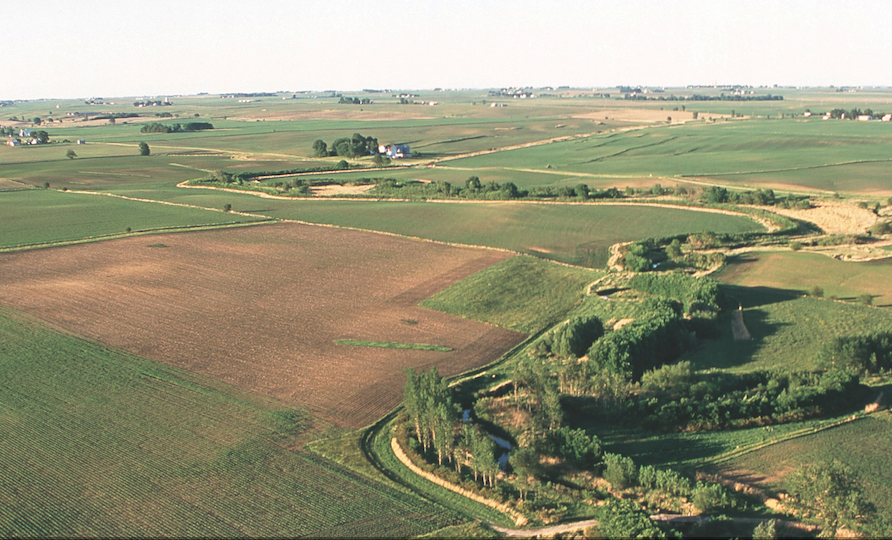Ecosystem services have been a popular theme in conservation policy. By preserving or restoring areas of natural habitat, the argument goes, important goods and services such as clean air and water, flood control, and crop pollination will be provided to society. Those goods and services, if properly accounted for, may even be worth enough to justify the protection of the forests, grasslands, wetlands, and other ecosystems that provide them.
It’s not surprising that the logic of ecosystem services has struck a chord. To some, the appeal is that all of the environmental benefits that “the market” has purportedly failed to account for could now be factored into public and private decision-making. To others, the possibility of structuring payments for ecosystem services that assign and respect property rights, and bringing the power of that same “market” to bear, may seem equally appealing.
But the situation is not as simple as these caricatures might suggest. If it is just a matter of structuring payments for the delivery of services of known and agreed value, it is difficult to explain why so much public-sector effort is being put into studying ecosystem services and enhancing their provision. Yet public agencies are deeply involved in such efforts. In the United States, for example, executive branch departments and agencies are now directed to “develop and institutionalize policies to promote consideration of ecosystem services… and, where appropriate, monetary or nonmonetary values for those services.”
A fundamental question undergirds the issue, and policymakers and conservation advocates have yet to completely grapple with it and its implications: When are ecosystem services so valuable that an appreciation for them would motivate us to forgo alternative uses of the areas that provide them?
Despite the accumulation of writing on the topic, there continues to be a surprising dearth of reliable evidence on the value of ecosystem services. Furthermore, a compelling case has yet to be made that public intervention is required to assure adequate areas are set aside to provide ecosystem services. More research may not resolve the issue. Perhaps the most important public policy question is an even more fundamental one: What is it that we as a society wish to save of nature?
A Lack of Evidence
There are now thousands of published articles on ecosystem services, yet little has been settled regarding their values. Kate Brauman finds that a majority of 381 peer-reviewed studies relating water to ecosystem services “failed to adequately link changes in environmental conditions to human well-being, instead stopping at the point of suggesting that one was connected to the other.” Concluding their review of ecosystem service studies, Ralf Seppelt and co-authors state that “less than one-third of all studies provided a sound basis for their conclusions.” Taylor Ricketts and fellow researchers perhaps inadvertently underscored an irony that persists: “Although the societal benefits of native ecosystems are clearly immense, they remain largely unquantified,” they wrote—without explaining how we can be so sure that the benefits are “clearly immense” if they remain “largely unquantified.”
Given the lack of robust work on ecosystem service valuation, it is not surprising that, as Yann Laurans and co-authors conclude, the literature “rarely reports cases where ESV [ecosystem service valuation] has been put to actual use, even though such use is frequently referred to as founding the goal and justification of ESV.”
Since the information that is available now is limited, it may be instructive to consider what basic economic principles imply about the value of ecosystem services. The single most important thing to remember when thinking about economic value is that value is determined on the margin. This principle is fundamental, but it is often not appreciated by non-economists, who have been engaged in much of the research on ecosystem services. Nature may provide services of immense value to humanity in total, but marginal values are what matter. And in the case of many ecosystem services, marginal benefits are likely to be low.
“The ecosystem services paradigm may mistakenly presume that the best way to conserve nature is to use it for its goods and services, rather than to find ways to leave it alone.”
As an example, think of wild bees. A bee’s economic value is determined by the value it adds by pollinating flowers that eventually produce fruit. If adding an additional bee to an orchard means that many more fruits will grow, then that bee could be extremely valuable. When bees are abundant, however, most flowers are likely to already be pollinated, so additional bees would add little to the expected value of the crop.
Similar considerations determine the value of other ecological assets. Forests or grasslands retained in a riparian buffer may remove some of the pollution that would otherwise enter streams and cause environmental damage. This service can be quite valuable if such areas are very effective at removing pollution. But the wider the existing buffer, the less pollution remains for the marginal meter of buffer to remove.
These examples highlight an interesting phenomenon, which we might call the “If-a-little-goes-a-long-way, you-don’t-need-a-lot” principle. If wild bees are prodigious pollinators, a small number of bees might be enough to perform the service of crop pollination. If riparian buffers are very effective at removing pollution, a narrow buffer might be all that is needed. And if a little bit doesn’t go a long way, substitutes may be more feasible than maintaining ecosystem services. For example, rather than devoting productive farmland for pollinator habitat, farmers instead might grow one of the numerous crops that do not require insect pollinators. Or rather than preserving large areas of riparian buffer, treatment plants may become a more attractive alternative. These basic economic principles suggest that the value of ecosystem services might be limited in many cases, and an appeal to ecosystem services would not motivate large-scale conservation when opportunity costs are significant.
So what does this mean for the question of whether public funds should be allocated to estimating the value of ecosystem services? And why is the ecosystem services framework often used to suggest that society is conserving too few native habitats?
The Value of Nature
Ecosystem services may seem to be a modern development in conservation policy, but current debates retrace a century-old conflict over the value of nature. In the early 20th century, John Muir, the founder of the Sierra Club, championed a vision of preserving nature for its own sake. Muir clashed with Gifford Pinchot, who would become the first Chief of the U.S. Forest Service. Pinchot promoted conservation as a means of enhancing the flow of nature’s more tangible benefits to society, and, in some instances, advocated more intensive uses of public lands.
Over recent decades, the latter vision has been ascendant. Conservation advocates have often argued that nature can essentially pay for itself, if we would only recognize its value. Natural areas might support sustainably harvested products, provide genetic models for new pharmaceutical compounds, offer recreational destinations for “eco-tourists,” and a host of other valuable goods and services.
In practice, however, the economics of such ventures often do not make sense. In some respects, nature is too generous—some of the goods and services nature provides are so abundant that people are willing to pay very little for them. Others fail because ancillary infrastructure is lacking. The world may be filled with natural wonders, but many are located in places that are too inaccessible and dangerous to attract many tourists. Moreover, low-intensity use of natural systems can only exist as long as the products or services being provided are of relatively little value. At higher prices, more intensive exploitation displaces sustainable use of diverse systems.
But what if the economics did make sense? If nature-based ventures would be profitable, why would the public sector have to subsidize them, as we often see? In particular, why would national governments need to be involved to induce local and regional decision-makers to do what is in their own interest? There does not seem to be a compelling answer. So why, then, is there renewed enthusiasm among ecosystem service advocates for the idea that nature can be made to pay for itself?
The likely answer is that conservationists perceive a mismatch between their goals and the means to achieve them. Conservation can be an expensive proposition. Preserving natural areas that shelter biodiversity requires amassing sufficient funds to compensate their owners for the opportunity costs of not converting forests, wetlands, and other areas to alternative uses. It may also require ongoing expenses to monitor natural areas and assure that they are kept intact. Conservation advocates and their funders seek ways to motivate more habitat conservation without bearing the full cost. It’s not surprising, then, that when it comes to ecosystem services, some conservation advocates have promoted public policies aimed at incorporating ecosystem services into regulatory decision-making.
Conservation Implications
Many advocates speak and write as if it were an established fact that ecosystem services are undervalued and that public policies should be enacted to assure that the ecosystems providing them are sufficiently protected. But these propositions are not, in fact, well established on a broad basis.
That is not to say that there are not important reasons to be concerned with the decline of natural ecosystems. There may well be, as many have suggested. Many of us feel ethical or even spiritual obligations to be good stewards of the natural world. However, the ecosystem services paradigm may mistakenly presume that the best way to conserve nature is to use it for its goods and services, rather than to find ways to leave it alone.
This underscores a fundamental issue with ecosystem services. If taken literally, ecosystem services-based arguments are not appeals for conservation in some generic and universal sense so much as for the conservation of particular types of areas. Many of the arguments for ecosystem services are, implicitly, exhortations to create checkerboard landscapes consisting of numerous small pockets of “natural” habitats situated within areas devoted to less-intensive cultivation, production, or settlement. But if land is used less intensively in production, it means either less will be produced or more land must be used elsewhere, causing human activities to expand further into the remaining “wild” areas of the planet.
Do we as a society want a world with many small areas devoted to conserving a limited suite of native species, or one in which production and human habitation are more intensive in some areas while more of the landscape is left relatively untrammeled?
Current research on ecosystem services has little to say about these questions. Instead, it seems intended to create the impression that technical calculations can inform conservation choices. Such a view would fit neatly into a paradigm in which regulators would determine the proper land-use choices and restrict property rights accordingly. In our society, however, we rightly set a high bar to such “takings.” At present, there is simply not enough reliable information about the value of ecosystem services to justify this sort of regulatory approach.
This essay was adapted from PERC’s policy report, “Ecosystem Services: What are the Public Policy Implications?” by R. David Simpson.




